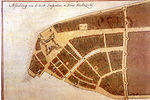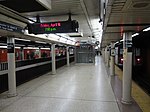Alexander Hamilton U.S. Custom House

The Alexander Hamilton U.S. Custom House is a custom house erected in 1902–1907 by the federal government to house the duty collection operations for the Port of New York. Designed by Cass Gilbert in the Beaux-Arts style, it is at 1 Bowling Green in the Financial District near the southern tip of Manhattan in New York City, roughly on the same spot as Fort Amsterdam and Government House. The Custom House was proposed in 1889 as a replacement for the previous New York Custom House at 55 Wall Street. Due to various disagreements, the Bowling Green Custom House was not approved until 1899; Gilbert was selected as an architect following a competition. The building was officially opened in 1907, and the murals in the rotunda were added in a Works Progress Administration project in 1938. The United States Customs Service moved out of the building in 1974, and it sat abandoned for over a decade until renovations in the late 1980s. In 1990, the Custom House was renamed to commemorate Alexander Hamilton, one of the Founding Fathers of the United States and its first Secretary of the Treasury. The building presently contains the George Gustav Heye Center of the National Museum of the American Indian, which opened in 1994, as well as the United States Bankruptcy Court for the Southern District of New York. Since 2012, it is also the home to the National Archives at New York City. The exterior of the U.S. Custom House was designated a city landmark by the New York City Landmarks Preservation Commission in 1965, while part of the interior was similarly designated in 1979. The building was added to the National Register of Historic Places in 1972 and was named a National Historic Landmark in 1976. It is also a contributing property to the Wall Street Historic District, a NRHP district created in 2007.
Excerpt from the Wikipedia article Alexander Hamilton U.S. Custom House (License: CC BY-SA 3.0, Authors, Images).Alexander Hamilton U.S. Custom House
State Street, New York Manhattan
Geographical coordinates (GPS) Address Website External links Nearby Places Show on map
Geographical coordinates (GPS)
| Latitude | Longitude |
|---|---|
| N 40.704166666667 ° | E -74.013611111111 ° |
Address
Alexander Hamilton U.S. Custom House
State Street 1
10275 New York, Manhattan
New York, United States
Open on Google Maps










